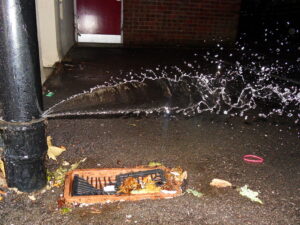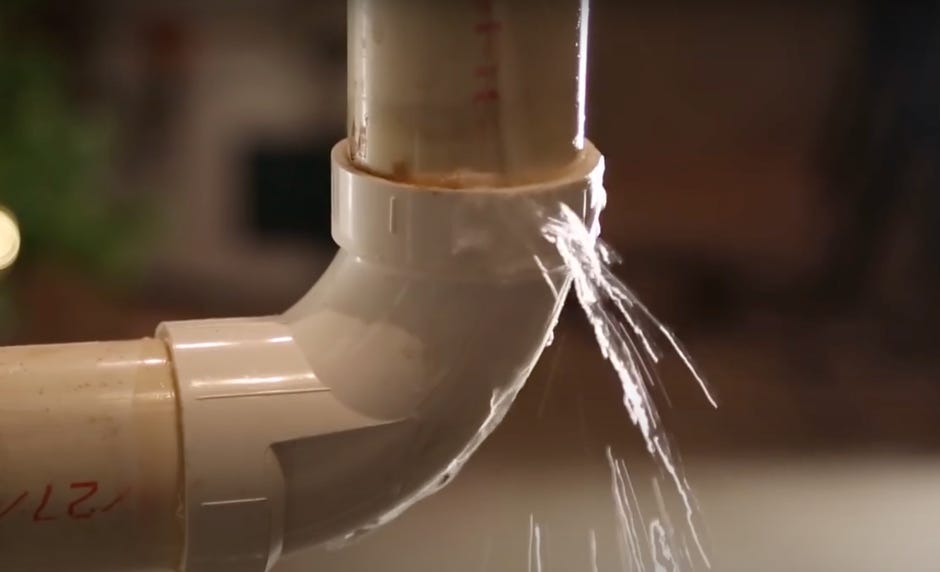This post following next relating to What Do I Do If I Have A Burst Pipe In My Home? is incredibly motivating. Don't overlook it.

You should know exactly how to turn off your primary water line if you suffer from a ruptured pipe. Do not wait for a plumbing emergency before learning how to get this done. Besides, aside from emergency leaks, you will require to turn off your primary water shutoff for plumbing repair work or if you leave for a lengthy journey. Discover even more concerning it in this mini guide.
Must This Constantly Be Shut down?
Besides emergencies, fixings, or long vacations, you may not need to shut off the primary shutoff. As an example, so one fixture has problems, you can switch off the branch shutoff in that place. In this manner, you can still use water in various other parts of the house. For finest outcomes, call a trusted plumber for emergencies.
Why Must You Shut the Main Line Off?
Familiarizing on your own with exactly how your mainline switches on and off can save you throughout an emergency. For instance, when a pipe suddenly bursts in your residence, you'll be besieged with panic. Therefore, you can readily close the valve off and also avoid even more damages if you know what to do. On top of that, shutting this off ensures you don't have to manage an unexpected flooding in your home.
On top of that, shutting and opening the shutoffs once in a while guarantees they don't obtain stuck. It is additionally the very best time for you to inspect for rust or various other busted connections. In addition, make it a point to inform various other family members on what to do. This makes regular maintenance and also dealing with emergency situations so much less complicated. You can potentially save on your own thousands of dollars out of commission.
Where is This Primary Valve Situated?
The major water line supply can vary, so you may need to find time to figure out where it is. However, when your home is getting soaked because of a ruptured pipe, you don't have the luxury of time during an emergency. Therefore, you have to plan for this plumbing predicament by discovering where the valve is located.
This shutoff valve could resemble a round valve (with a lever-type deal with) or a gate shutoff (with a circle faucet). Placement depends on the age of your residence as well as the climate in your location. Inspect the following usual areas:
Steps to Take When a Pipe Bursts
No one can deny that owning a home is a major expense, especially if it’s a mature model. When it comes to a busted water pipe, the damage can be serious for your home, your possessions, and your health if the mess is not cleaned up properly.
Stop the water
First thing, turn off the water flow when you suspect a pipe has broken, even if you don’t know where the water’s coming from. You’ll find the stop tap on the water main. It is typically located under the kitchen sink or where the main service pipe connects to your house. Every family member should know the location of the water shut-off stopcock for emergencies.
Once the main water switch is off, you’ll need to drain the pipes. To do this, run the cold water on all the faucets. Be sure to flush each toilet at least once. Shut off the hot water heater. Once the hot water system is off, go back to each faucet and run the hot water to drain that supply. When there is no more running tap water, the leak will stop.
Locate the broken pipe and inspect the damage
After draining all the excess water, locate the burst pipe. Inspect the damage and consider where the pipe is located before you run off to the home improvement store. Regardless of the damage or size of the break, a major water pipe will take more time and effort to replace because it holds more water and leads to additional connections, as opposed to a single pipe under the bathroom sink.
If it’s a small break, you might be able to patch it and prevent further damage while saving money. If you use a commercial tape or chemical bonding agent, however, keep an eye on that repair job, because it might burst later and you’ll back where you started.
Repair the burst pipe
Fixing a rupture or crack in non-main pipes is usually fairly straightforward, but it can become expensive depending on the mending material you choose. Here is an inexpensive repair for small cracks and water breaks that also gives you superior hold.
You’ll need an extra-long length of ordinary garden hose and two or three hose clamps or similar grips that produce extreme constriction. Measure the fissure or crack and cut the garden hose about ten inches longer than needed to fill the broken area.
Next, slice the garden hose so you can slip it over the crack or burst in the water pipe. Using the hose clamps or similar brackets, hold the hose portion over the busted area and compress it as tight as it will go. Test your repair by turning on the water.
If the break is larger, use a hacksaw to cut away the portion of the pipe that’s busted. Be sure to cut it about an inch larger on either side of the rupture. When replacing the missing piece of pipe, use pipe spacers and sealant, but do not tighten it too tight. When a compression nut is too tight it causes an ovaling effect that leads to further leaking. If you tightened the compression nut too much and the repair ovals, start with another compression nut.
Bring in a professional drying crew
If the water from the burst pipe is on the walls or ceilings as well as the floor, contact a professional water restoration company. Simply using fans and open windows to dry a soaked area is an invitation to mold, mildew, and even serious illness for your family. You will also want to shut off the electrical power to that area of the house as a precaution against shocks.
If you have successfully restored your home to its original state or fixed a burst pipe on your own, congratulations! Be sure to run the cold water, then the hot water; and don’t forget to flush the toilets before normal usage begins.

I stumbled upon that entry on How to Shut off Your Water When Pipe’s Burst when exploring the internet. Are you aware of another individual who is in to ? Be sure share it. Thanks a lot for taking the time to read it.
Get the best, call!